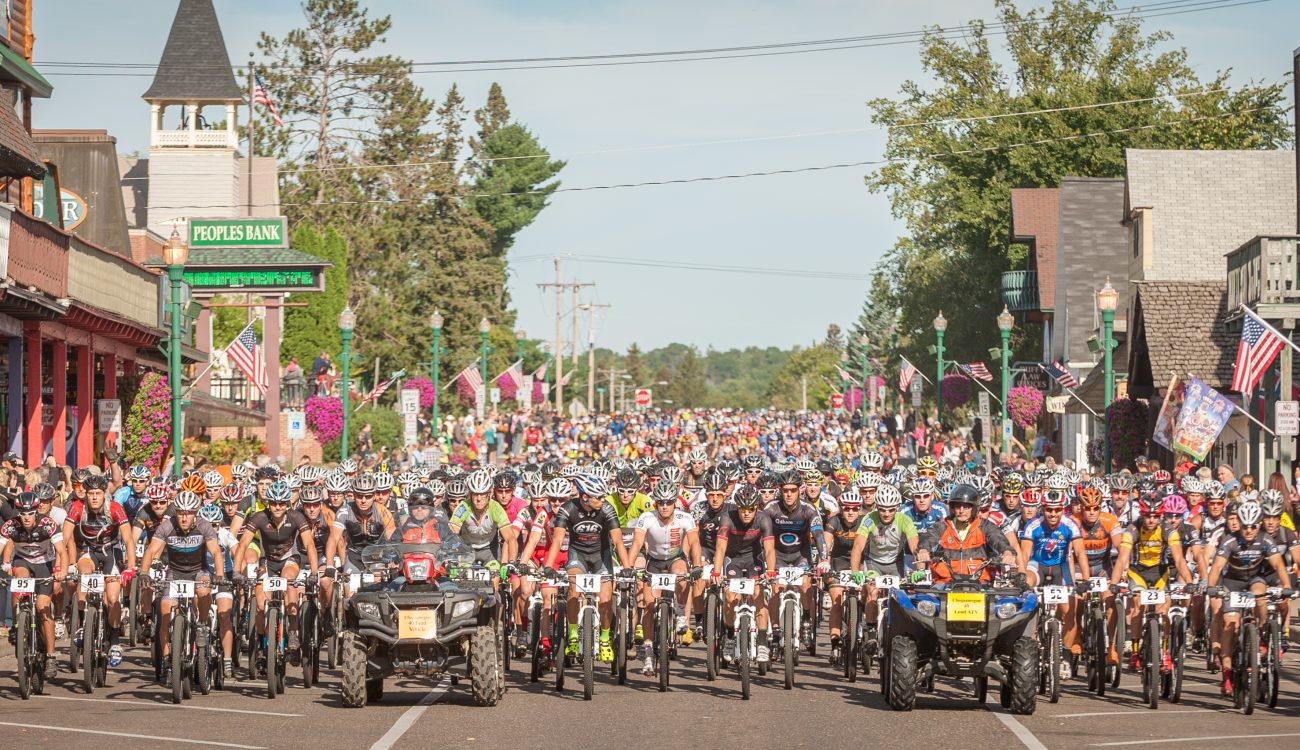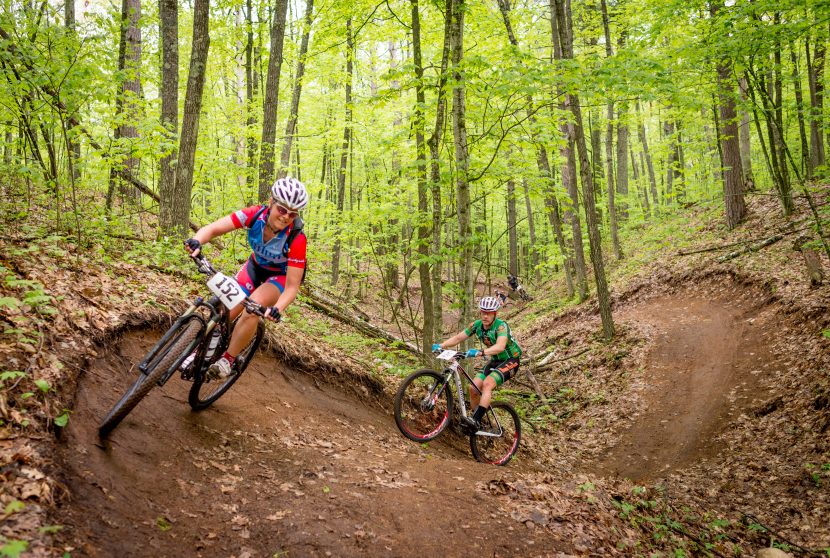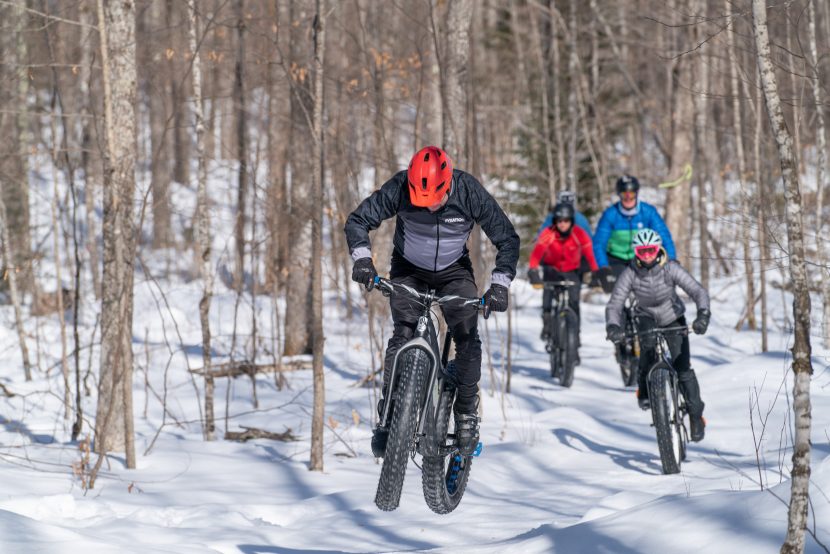
Mountain Biking Adds $7.8 Million to the Chequamegon Area Economy
Surveys reveal CAMBA trail riders to be big spenders
Surveys reveal CAMBA trail riders to be big spenders
My mom’s side of our family is from Park Falls, Wisconsin. As a kid, all our vacations involved driving up north to visit relatives and go fishing. When we stayed at the historic Boyd’s Mason Lake Resort, our days typically consisted of loading rods, tackle and the works into a rented aluminum boat after breakfast and fishing until lunch. After lunch, we would fish from the dock by our cabin until dinner.
Those are great memories, but I never tried to repeat them with my own family. While we did head north for vacations on lakes, we picked Boulder Junction over Park Falls. This was not because it lays claim to the title Musky Capital of the World, but because the tiny town is on the amazing network of paved Heart of Vilas County Trails. The icing on the cake was we also could head over to Aqualand for great craft beer and wood-fired pizzas.
My wife and I recently became permanent residents of Seeley after I accepted the position of executive director for the Chequamegon Area Mountain Bike Association (CAMBA). Prior to this, my personal vacations up north were either for an annual deer hunt or to ride gravel and singletrack with buddies. We played a driving game along the way to see who could count the most bikes on other cars and trucks. Sometimes we gave additional points for high-end bikes versus department store models or for the number of handlebars we could see through the tinted windows of a minivan.

Depending on the season, the game often also prompted a discussion about the number of ATVs or snowmobiles we’d see on trailers. Beer is a big part of both motorized and nonmotorized recreational culture, fueling many an animated post-ride discussion. But if you ask a tavern owner north of Hwy. 8, they will likely tell you the 4-wheelers and sleds parked in their lots are what keep their doors open and the local economy humming.
As someone who recently moved to the outskirts of Seeley, I know the parking lot of the Sawmill Saloon is full of snowmobiles all winter long. But so was the parking lot at the trailhead for the Seeley winter bike and ski trails around the corner. And the little lot at the Rivers Eatery in Cable could have used a parking attendant to help direct traffic as a constant stream of vehicles with racks full of skis and fat bikes flowed in and out to pick up carryout wood-fired pizza, Tilly’s Pies and craft beer.
So, yes, snowmobiles and ATVs might be the bread and butter for taverns, but silent sport enthusiasts are also big contributors to the economy, as are people who hunt, fish or just like heading up north to relax. The timber industry remains important and there is still manufacturing in the Northwoods, too.
“YOU WILL ATTRACT MORE VISITORS FROM NEAR AND FAR IF YOU HAVE MORE TO OFFER”
The recipe for a healthy local economy in today’s Northwoods is like a layer cake. You can’t make it without the basic ingredients. Think of the beautiful forests, lakes, rivers and quaint small towns filled with welcoming people as the flour, sugar, eggs, butter and milk. The different layers are flavored with hunting, fishing, motorsports, bicycling and skiing. Retail shopping, restaurants and taverns make up the icing on the cake. While you can still get by with a basic chocolate or yellow cake, you will attract more visitors from near and far if you have more to offer.
If you want to perfect the recipe, it helps to know how much each ingredient contributes to a great cake and how much they cost. In order to try to quantify the return on investments made in bike trails, many local communities and mountain bike clubs are doing economic impact studies.
The trails around the Hayward and Cable area, built and maintained by the American Birkebeiner Ski Foundation and CAMBA, attract tens of thousands of visitors each year for recreation and competition. Some of those visitors eventually buy vacation homes in the area, pay taxes and even become permanent residents, like me and my wife.

In order to learn more about what mountain bikers like and how much they contribute to the local economy, CAMBA partnered with the Survey Research Center at the University of Wisconsin-River Falls to do an economic impact study.
The CAMBA study consisted of two surveys, one focused on measuring the economic impact of the trails and the other on users’ experiences out on the trails. The first CAMBA survey (Part I) started in mid July 2019, and data was collected until late October 2019. Data collection resumed in mid February 2020 and finished a month later. This was an intercept survey in which CAMBA trail users at 12 trailheads were interviewed by volunteers.
The second survey (Part II) was online, following up with participants from the intercept surveys done at the trails, but also including CAMBA members and people who are on our email mailing list. This survey started April 7, 2020, and data collection was completed April 18, 2020.
What we found is that more than 30,000 people riding CAMBA’s 120-plus miles of mountain bike trails annually contribute nearly $8 million to the area economy by what they spend on food, beverages, lodging and shopping at retail stores. That is a lot of money spent on ingredients for the economic layer cake. Put that layer on top of other tasty Northwoods flavors like skiing, hunting, fishing and motorsports and you get a rich, delicious cake almost anyone would enjoy.
I have shared the major highlights of the surveys and economic study here, but you can find a link to the full study on our website, cambatrails.org. Thanks to everyone who participated, the many volunteers who spent their time waiting at trailheads, and to former CAMBA Executive Director Ron Bergin and the members of the CAMBA board of directors for this major effort. And thanks to the experts at UW-River Falls for analyzing and making sense of all the data.

CAMBA Survey Says…
Part I of a recent survey gathered information about CAMBA trail users, their biking practices and the amount of money they expected to spend during their trip to the CAMBA trails. Part II included more data gathered through an online survey of the respondents, more detailed information about their biking habits, their experiences and assessment of the CAMBA trails. Here is some of what was learned.
Demographics
- More men (66% of the sample) were interviewed than women (33%)
- A majority (56%) were 45 or older
- Approximately eight in 10 respondents had at least a bachelor’s degree
- 61% of respondents had six-figure household incomes
- Nearly three-quarters (73%) of respondents reside outside of Sawyer and Bayfield Counties
Riding Experiences
- Median number of days/year that CAMBA riders travel away from their home to bike, 15 days
- Median spending on cycling by CAMBA riders, $1,000
CAMBA Experiences
- Most respondents (89%) had ridden on CAMBA trails before, and four in 10 had ridden CAMBA trails in the winter
- The median number of times respondents had ridden on the CAMBA trails, nine
- The median number of times respondents had ridden CAMBA trails in winter, one
- A majority of survey respondents were either riding alone or with one other person
Accommodations When Visiting CAMBA Area
- About one in five CAMBA users who live outside the area stay in a rented cabin or house (23%) or a vacation or second home they own (20%)
- The typical non-local CAMBA user stays two nights during their visit
Spending by CAMBA Visitors
- On average, each non-local visitor of CAMBA trails expects to spend $200 per day during their visit to the area
Total Economic Impact
The spending of CAMBA users is estimated to have boosted the 2019 Bayfield and Sawyer County economies by:
- Creating 118 jobs
- Generating $2.3 million in labor income
- Generating $3.2 million in total value
- Having a total impact of $7.8 million to Bayfield and Sawyer Counties during 2019
- Spending by CAMBA users added approximately $1.8 million to the total value of both full-service restaurants and hotels and motels in the two counties
Winter CAMBA Users
- Only about 10% of CAMBA trail riders use the trails during winter
CAMBA User Characteristics
- A majority of survey respondents (62%) classify themselves as having above average or expert biking ability
- Two-thirds said they ride more than 10 miles daily
- Approximately nine of 10 respondents said that singletrack, trail variety and quiet, natural surroundings were important or very important trail characteristics
- Singletrack trails is the “most important” trail characteristic respondents consider when deciding which trail to ride
- 87% of respondents have ridden on other trail systems in Wisconsin, the Midwest or elsewhere in the U.S.
- Respondents were most likely to have ridden on trails in the Twin Cities metro area
- More than half (58%) of the 796 non-Wisconsin trails identified were located in the Midwest